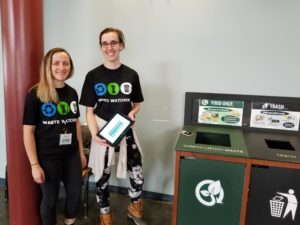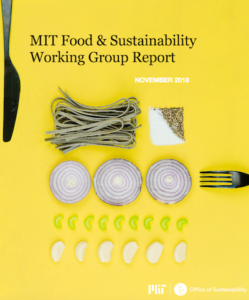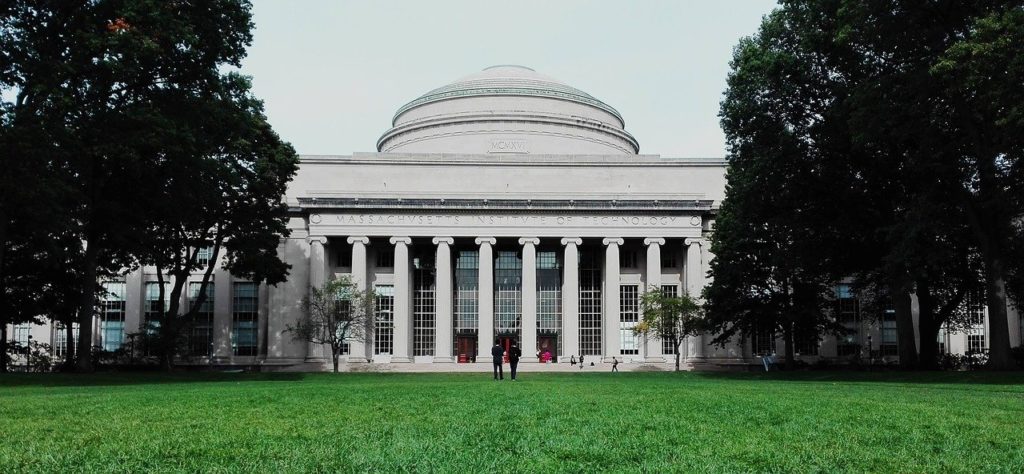Organizations are undergoing transformations to meet individual and community-driven sustainability goals. We sat down with Brian Goldberg, who works in MIT’s Office of Sustainability, to discuss how data drives their decision-making and the impact waste management makes on meeting their goals.
Q: Tell us about yourself and your role on campus?
I’m passionate about solving sustainability challenges and see a university campus as an ideal test bed; a community that values solving complex problems through testing, data-driven decision-making, and scaling of solutions. I’m the Assistant Director of MIT’s Office of Sustainability, charged with helping to lead our team and our collaborations in transforming campus systems and behaviors to achieve sustainable impacts for the community and the planet.
Q: How important is waste data collection to the MIT community?
MIT is a community that values data-driven decision-making. While the waste field has lots of anecdotes that support standard waste practices, at MIT, we’re committed to helping develop best practices that are reinforced by data. Then, our goal is to share these best practices with our community to drive impactful behaviors.
At a systemwide scale, the data about our waste systems can help us prioritize problematic streams or hotspot locations and identify opportunities for improvement, new research testing, and innovation. Data also enables us to track our progress and measure performance over time so we can report back to the community. This data helps to hold our community and our vendors accountable. Since we’re trying to address the entire material flow from inputs (procurement) through outputs (waste), we need methods like waste audits to inform our broader data context.
Overall, data tracking and monitoring help us be transparent about our process so that as a higher ed institution we can open-source our process and solutions and that others can learn with us and leap frog.
Q: What drove your decision to work with RTS to conduct a waste audit on campus and what outcomes were you looking to achieve?

Source: web.mit.edu
Our aim at MIT is to develop the in-house capacity to monitor our waste practices as a campus over time. We’re keen to understand an industry leader’s (RTS) methods through a waste audit so that our campus-based teams, including MIT Waste Watchers, can be trained in the RTS waste audit method, empowering our students to lead campus waste auditing and waste monitoring over time.
Regarding outcomes, a recent waste audit that engaged Waste Watchers and other student leaders provided the opportunity to establish a baseline of waste composition during the pandemic for high-use student locations. We wanted to understand how a student community sample, when faced with the higher-than-normal volume of to-go food containers was making disposal decisions.
Additionally, student leaders from the Student Sustainability Coalition were looking to design out some of the to-go container waste and influencing procurement efforts by developing a reusable utensil program for undergrads in the spring semester. This fall semester baseline audit will enable students to measure the effectiveness of reusable utensils in the spring, with one data point being a reduction of single-use utensils in the waste stream. A future audit will help students assess whether their reusable utensil strategy has been effective in designing out this problematic and costly waste stream item.
 Q: What are some of the main insights you received from the waste audit data results?
Q: What are some of the main insights you received from the waste audit data results?
The RTS audit helped to confirm MIT’s prior waste audits which identified that food waste is a large component of our trash stream. Single-use utensils also have a significant presence. There also appears to be a need for more effective communication about how to properly dispose of to-go food containers.
This waste audit is significant because it gives a snapshot of campus behavior during Covid campus conditions, which includes an unusually large number of to-go containers with very few reusable materials as part of the food service. The waste audit conducted in a dorm gives us insight about the impact of this single-use, disposable centered set of practices and how those materials are being disposed in term of trash or recycling bins.
Overall, we learned that food waste is a large component of the trash and this has emboldened our efforts to test expanded food waste collection in campus dorms. We learned that single-use utensils are a significant portion of the waste stream, which enabled students to petition MIT Dining to provide all undergraduates with reusable utensils during the spring semester. Last, the waste audit showed that clearer guidance is needed on the disposal of materials like food containers.

Source: sustainability.mit.edu
Q: How will you use the data collected from the waste audit to drive change on campus? (Change in procurement, operations, campus waste educations, etc.)
As the result of the findings mentioned above, we are now testing food waste collection in new locations on campus. We’ve also designed signage to more effectively communicate what goes where and are working with Waste Watchers, the Department of Facilities, and dorm residents to test the effectiveness of those signs. We will start data collection and monitoring of how effective these interventions—new signs, bins, and reusable offerings—are at designing out waste.

Source: ehs.mit.edu
Q: Do you expect the results of the waste audit to change behavior among students and faculty?
We certainly hope so! Waste is a hot-button issue on campus. We receive many requests from our community to help them understand how MIT is performing as a campus or as individual departments or dorms, and what steps groups on campus can take to design out waste. We see behavior change happening as folks make more informed decisions in response to the infrastructural changes through new bins and signage accompanied by targeted education. After collecting, analyzing, and sharing data on the behavior changes results from the new signs and bins, we believe this evidence-based feedback to the community will drive additional behavior change. And, we envision these pilot studies to inform the campus-wide roll-out of more effective infrastructure and messaging (i.e. signage, bins, labels, waste education).
We look forward to our spring audit to learn more about the impacts of these recent changes. Results of past waste audits conducted in a number of spaces and places, are open to the general public and can be viewed here.



